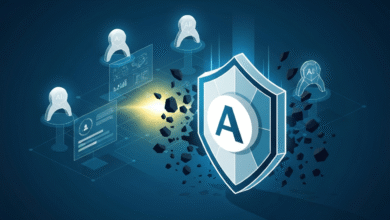Okta’s Identity Security Fabric: Securing the AI-Driven Enterprise

▼ Summary
– Okta announced new platform capabilities enabling organizations to build secure AI agents that integrate into an identity security fabric for end-to-end lifecycle management.
– AI agents are used by 91% of organizations but amplify security risks, with only 10% having a strategy for managing non-human identities.
– The Okta for AI Agents solution provides visibility, centralized control, and automated governance to manage the identity lifecycle of AI agents securely.
– Okta introduced Cross App Access (XAA), a new open protocol to secure agent-to-app interactions with centralized policy management and enhanced auditability.
– The Okta Verifiable Digital Credentials platform will issue tamper-proof credentials to help prevent AI-powered fraud and simplify user verification processes.
In today’s rapidly advancing technological environment, securing artificial intelligence systems has become a critical priority for enterprises worldwide. Okta positions itself as a fundamental solution, introducing an identity security fabric designed specifically to manage the unique challenges presented by AI agents. This framework aims to provide end-to-end lifecycle management, integrating these non-human identities securely into an organization’s existing infrastructure. A key component involves issuing and verifying tamper-proof digital credentials to combat AI-driven fraud and establish reliable trust mechanisms.
The widespread adoption of AI agents is undeniable, with an overwhelming majority of organizations already leveraging their capabilities for productivity gains. However, this rapid integration has outpaced the development of robust governance frameworks. A significant security gap exists, as very few companies have established strategies for managing non-human identities, leaving them exposed to substantial risks. Real-world incidents, such as data breaches caused by poorly configured AI systems, underscore the urgent need for purpose-built security controls.
Okta emphasizes that AI agents must be secure by design, incorporating dedicated controls for identity, access, and authorization from the outset. Building on a new generation of open standards ensures secure interoperability between agents, applications, and various systems. When agents are “fabric-ready,” they can be seamlessly incorporated into the identity security fabric. This integration provides comprehensive visibility and centralized governance over every identity type across complex ecosystems.
During the recent Oktane conference, Okta’s leadership detailed how the company’s platform enables organizations to construct secure AI experiences from the ground up. The approach involves using Auth0 to help developers build trusted agents that interact safely with users, while the broader Okta platform integrates these agents into a unified security fabric. This gives IT teams the necessary tools to visualize and manage the expanding surface area of AI agents within their workforce.
Industry analysis supports this direction. Predictions indicate that adopting identity fabric immunity principles could prevent the vast majority of new attacks in the coming years. The modern enterprise requires a cohesive identity security strategy that can eliminate silos and reduce the overall attack surface. Okta’s latest innovations are designed to weave AI agents directly into this protective fabric, managing their entire identity lifecycle through open standards.
A major announcement was Okta for AI Agents, a solution that seamlessly integrates these entities into the identity security fabric for complete oversight. It offers capabilities for discovering risky agents, managing their access through centralized control, and automating governance to enforce security policies throughout their lifecycle. The rollout is planned in phases, with general availability targeted for FY27.
The functionality breaks down into several critical areas. Identity Security Posture Management allows organizations to detect AI agents and identify risks associated with service accounts and API keys. Universal Directory helps provision and register these non-human identities, attributing risk classifications and ownership. Dynamic authorization enforces the principle of least privilege, ensuring agents have only the necessary access for the required duration. Furthermore, Identity Governance provides detailed audit trails, and Identity Threat Protection uses behavioral analytics to spot anomalies and trigger automated responses.
Another significant innovation is Cross App Access (XAA), a new open protocol that extends OAuth to secure interactions between agents and applications. With backing from major industry players, XAA shifts security control to the identity layer, enabling real-time visibility and policy-driven management. For developers, Auth0 will soon offer out-of-the-box support, simplifying the process of building “fabric-ready” applications that adhere to the protocol. Enterprises can already experience XAA in its early availability phase, benefiting from centralized policy management, enhanced auditability, and a reduction in user consent prompts.
To address the growing threat of AI-powered impersonation and fraud, Okta also introduced its Verifiable Digital Credentials platform. Slated for availability in FY27, this system allows organizations to issue and verify tamper-proof, reusable credentials, such as government IDs or employment records. Built on open standards, it aims to reduce friction during user onboarding while providing a robust method for individuals to prove their identity digitally. An initial Digital ID verification feature, planned for late FY26, will begin with support for mobile driver’s licenses.
The overarching goal is to establish a trusted foundation for interactions in a world increasingly populated by AI agents. By providing a unified, standards-based approach to identity security, Okta’s fabric aims to empower organizations to harness the power of AI confidently and safely.
(Source: ITWire Australia)





